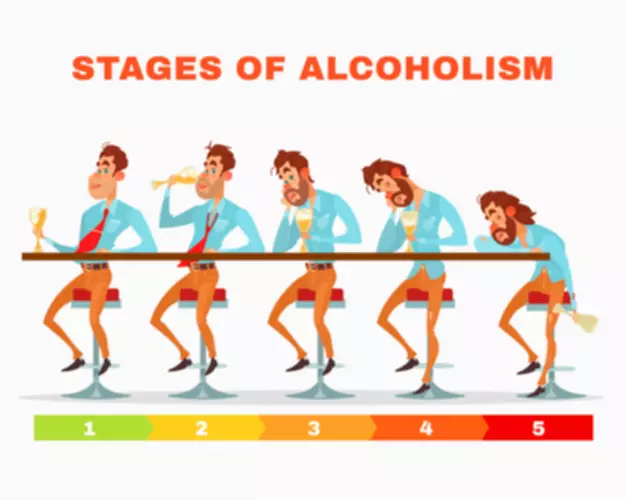
Those who live in halfway houses are expected to comply with the rules and expectations of the house. Those who live in sober homes are typically free to leave at any time. However, leaving the halfway house without permission, during curfew hours, or otherwise violating the rules of leaving the home can lead to consequences such as eviction from the program.
The Role of Family Members in Recovery
The term halfway house has beenstigmatized because of its association withprisoners and people who have a history of drug use. Organizations may use other terms in lieu of halfway housesto avoid stigmatizing residents. Residents of a halfway house may be encouraged or required to work or attend school as part of their transition back into society. This may include job training or assistance with finding employment, as well as support for educational pursuits such as GED preparation or college courses. Many people transition into sober living after finishing a residential program to continue their recovery journey in an outpatient setting. If you’re considering your options after the completion of a treatment program, contact a treatment provider today and continue your journey to a sober life.
- While these items are recommended, it’s essential to check with the specific halfway house you are planning to stay at for any additional guidelines or restrictions.
- Prison systems in many states use halfway houses to help individuals re-enter society after incarceration.
- Halfway houses have specific visitation policies designed to foster an environment conducive to recovery.
- Halfway houses tend to cost less than sober living houses, but the overall cost can vary depending on location, amenities, etc.
- Halfway houses offer a level of structure and accountability that helps residents maintain sobriety and make positive life changes.
Concerned About A Loved One? Learn More About Involuntary Treatment Laws in Virginia

You will finally see all the good aspects of life that were clouded by your addiction. Although some halfway houses serve people experiencing psychiatric issues or homelessness, most focus on recovery from substance abuse issues. However, by embracing sobriety, residents of halfway houses often experience improvements in their physical well-being.
- They’re like the cheerleaders rooting for your success at every twist and turn.
- This may include job training or assistance with finding employment, as well as support for educational pursuits such as GED preparation or college courses.
- A halfway house is a residential place where people recovering from addiction or released prisoners reintegrate into society while receiving supportive services.
- At sentencing, McEwen faces a maximum term of imprisonment of five years.
- However, they still offer more structure and a larger support system than independent living.
The Important Role of Halfway Houses in Addiction Recovery
This is an essential step towards full recovery because addiction might have caused you to lose your sense of responsibility and obligation. You might also have been enabled in your addiction by your friends, family, and loved ones. Although halfway houses offer more freedom than rehab, they have various limits and restrictions and differ considerably in organization. Others are closely managed and monitored with a high degree of structure. Ascension House provides high structure and accountability to individuals recovering from addiction with safe and comfortable sober living homes in Austin, TX.

If you attend 12-step or other recovery meetings, you can ask other members of your group for recommendations as well. If you still haven’t been able to get recommendations, do a quick Google search to read reviews and find halfway houses in your area. If a person comes from a correctional facility, they can be court-mandated to live in a halfway house for a predetermined amount of time.

Design for Recovery provides structured sober living in Los Angeles, California. The cost of a halfway house can differ significantly depending what is a halfway house on several factors. The location of the halfway house is an essential factor in that the living costs vary according to the region.
- However, a “halfway house” may sometimes refer to a court-ordered program.
- They are meant for reintegration of persons who have been recently released from prison or continuous[clarification needed] mental institutionalization.
- Living in a halfway house benefits many people undergoing addiction treatment.
- Although this may seem inconvenient and unnecessary, remember that not everyone is serious about staying clean and sober.
- “Sober living” is a recovery-specific term, whereas “halfway houses” can also house parolees transitioning out of the criminal justice system.
Different Types of Transitional Housing in Recovery
- Tests of drugs and alcohol at random can be employed to check for compliance.
- By 1950, those programs were further adapted to serve specialized populations, such as criminally involved drug and alcohol abusers.
- The different support services offered in a halfway house are part of the holistic care for residents.
- Also, residents are expected to remain sober and participate in chores as part of their communal living responsibilities.
- Living in a halfway house will provide you or your loved one with a safe, drug-free (and alcohol-free) environment.
- Halfway houses aren’t equipped to deal with withdrawal, so detox must be completed before move-in.
You may have to leave if you break the rules, especially if you fail a drug test or bring drugs into the home. For individuals who have recently been released from prison or correctional facilities, a halfway house can offer a vital bridge between incarceration and independent living. These homes provide the necessary support and structure to help individuals navigate the challenges of reentering society while reducing the risk of relapse or recidivism.
Prison systems in many states use halfway houses to help individuals re-enter society after incarceration. These houses providean array of services that can include treatment for substance use disorders. The rules of a halfway house are designed to provide structure and accountability to help those in recovery achieve and maintain sobriety and to ensure the safety and well-being of all residents.

Living in a halfway house will provide you or your loved one with a safe, drug-free (and alcohol-free) environment. At a halfway house, you will continue working on your early recovery while enjoying the peer support of your fellow recovering housemates. Rather than housing people in the throes of addiction, sober living homes provide a space for people seeking to establish a new trajectory for their lives, which includes a practical application to sobriety. Living with others that are successful, demonstrates to them that it is possible and helps them reach that point. The best halfway house provides both support and structure, with positive reinforcement when you succeed and honest but caring guidance when you falter. It’s all about building a solid foundation for a lifetime in recovery, beginning by showing you how a sober life works and how good it can make you feel.
